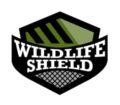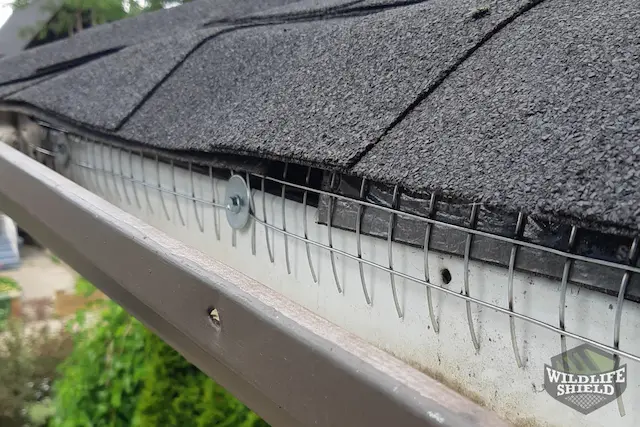The following case study details a raccoon mother and baby removal job in Old Toronto. A family of raccoons had broken into a residential attic by taking advantage of the roof’s aging condition. To remove them, a technician on the Raccoon Control team installed one-way doors for both the mother and her cubs. Additional holes and weaknesses in the roof were then sealed for a permanent exclusion.
Exterior Inspection and Recommendations
The homeowners in this case first called Raccoon Control after witnessing some activity on the roof above their porch. It was July, and they could sometimes hear the animals scurry around or climb up and down the roof at night. Raccoons are common in Toronto’s residential areas, so it was suspected that a female was raising her cubs within the attic of this property. A technician soon came to inspect the situation and provide a solution.
No matter the job, our technicians perform thorough inspections, investigating every nook and cranny of the affected structure. This allows us to find the root cause of the issue and address all factors contributing to the risk of another future infestation. Because the raccoons were living somewhere in the attic, the technician started with the roof. The roof was examined closely for points of entry, signs of raccoon damage, and other weaknesses that pests could take advantage of in the future.
Here, the technician found that the edges of the roof were severely damaged. The drip line was aging and therefore splitting from the framing of the house, creating openings for wildlife. Small animals like mice and rats can climb through these openings, while squirrels can chew through the exposed wood and raccoons can create larger holes by tearing at them with their paws. Several holes were spotted along the edges of the roof.
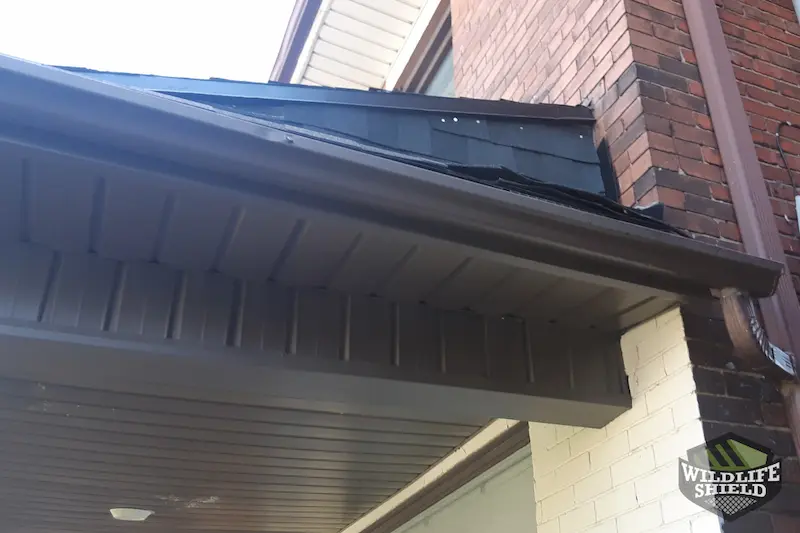
Given that the homeowners had witnessed the family of raccoons, the technician recommended installing two one-way doors: one for the mother and one for the babies. Once cubs are big enough to move around on their own, they do not need to be removed by hand, but they may not be strong enough to use the same one-way door as their mothers. The one-way door for babies would also be too small for a mother to use. Thus, the best course of action was to exclude the edges of the roof with mesh and to install two one-way doors for the animals to exit the attic safely.
Removal and Exclusion
Immediately following the inspection, the homeowner agreed to evict the animals with one-way doors. These were installed where the gaps in the roof were largest. The one-way door for the raccoon mother consisted of a plexiglass flap screwed right into the roof and surrounded by mesh. The door for the babies was tunnel-shaped and made entirely of mesh. Like a trap, the doors would swing outward but block the animals’ re-entry. Neither the mother nor her young would be harmed in the process. Once out, they would find another place to stay nearby.
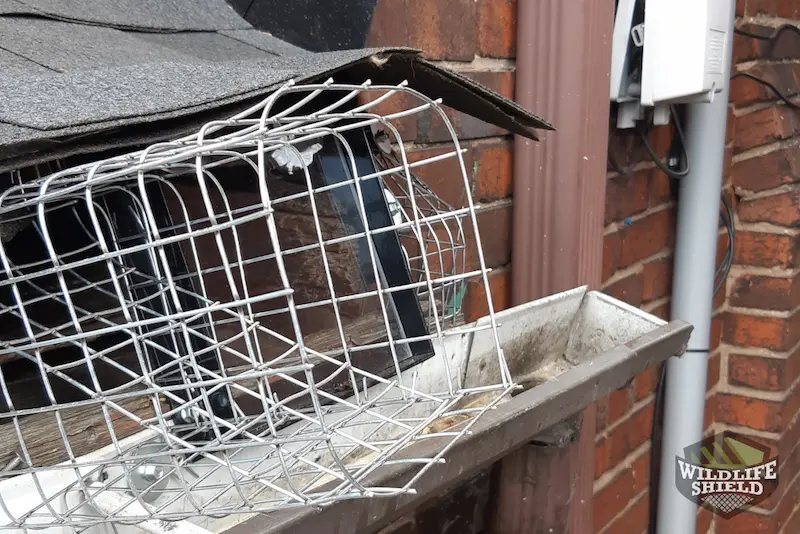
In addition to the one-way doors, the technician excluded 12 feet of the dripline with galvanized steel mesh. This is a durable and flexible material that cannot be chewed nor torn through by animals. Sealing the drip line in this way would help prevent the raccoons from getting back inside and stop any more infestations from happening.
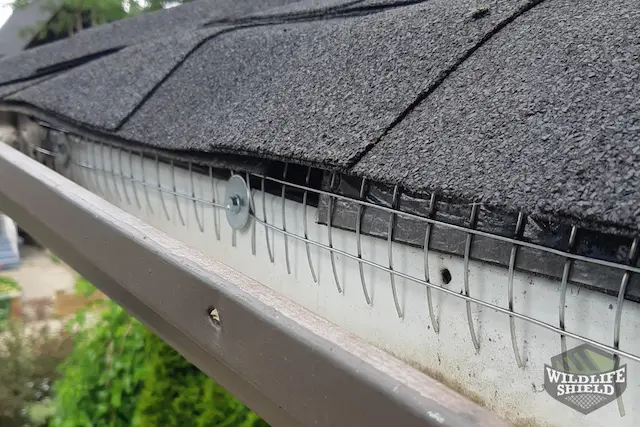
Within a few days, the raccoons had left the property. They simply crawled out of the attic through the doors and moved on to somewhere else. The technician then returned to this Toronto home and replaced the one-way doors with additional mesh.
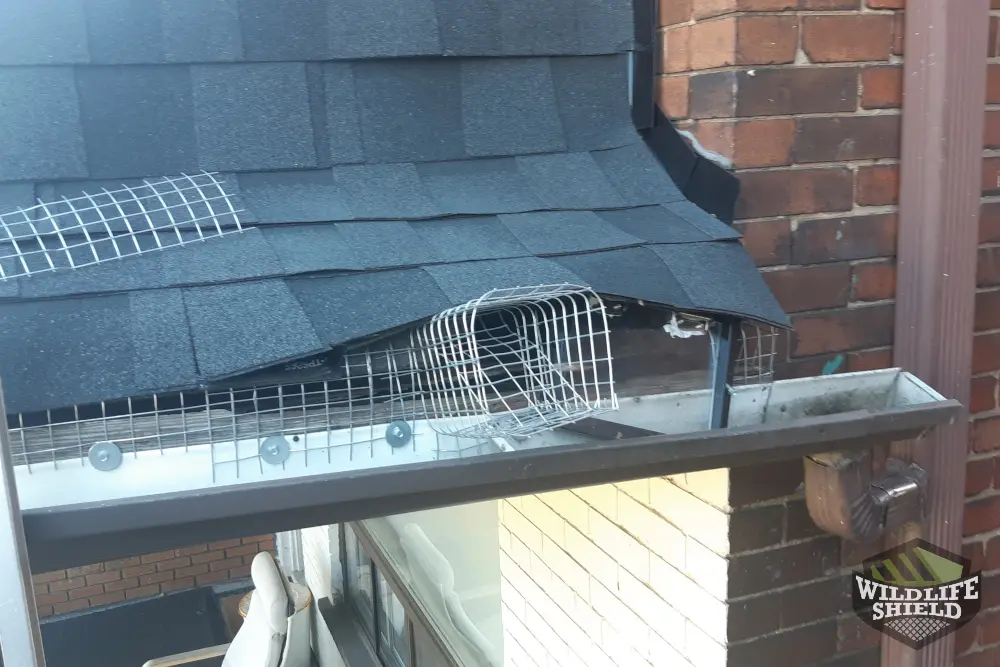
Conclusion
Like hollow trees, attics provide raccoons with an opportunity to nest above ground. Raccoons are intelligent creatures that will exploit any weaknesses they find on the roof. In this case, raccoons had broken into the attic above the porch by pulling up on the aging shingles and tearing through the rotting drip line behind them. The installation of one-way doors has since evicted these animals and the strengthening of the roof’s edges has kept them out. If there are raccoons in your area, be sure to maintain your roof and call Raccoon Control for comprehensive wildlife-proofing services. Our exclusion work comes with a 2-year warranty.
